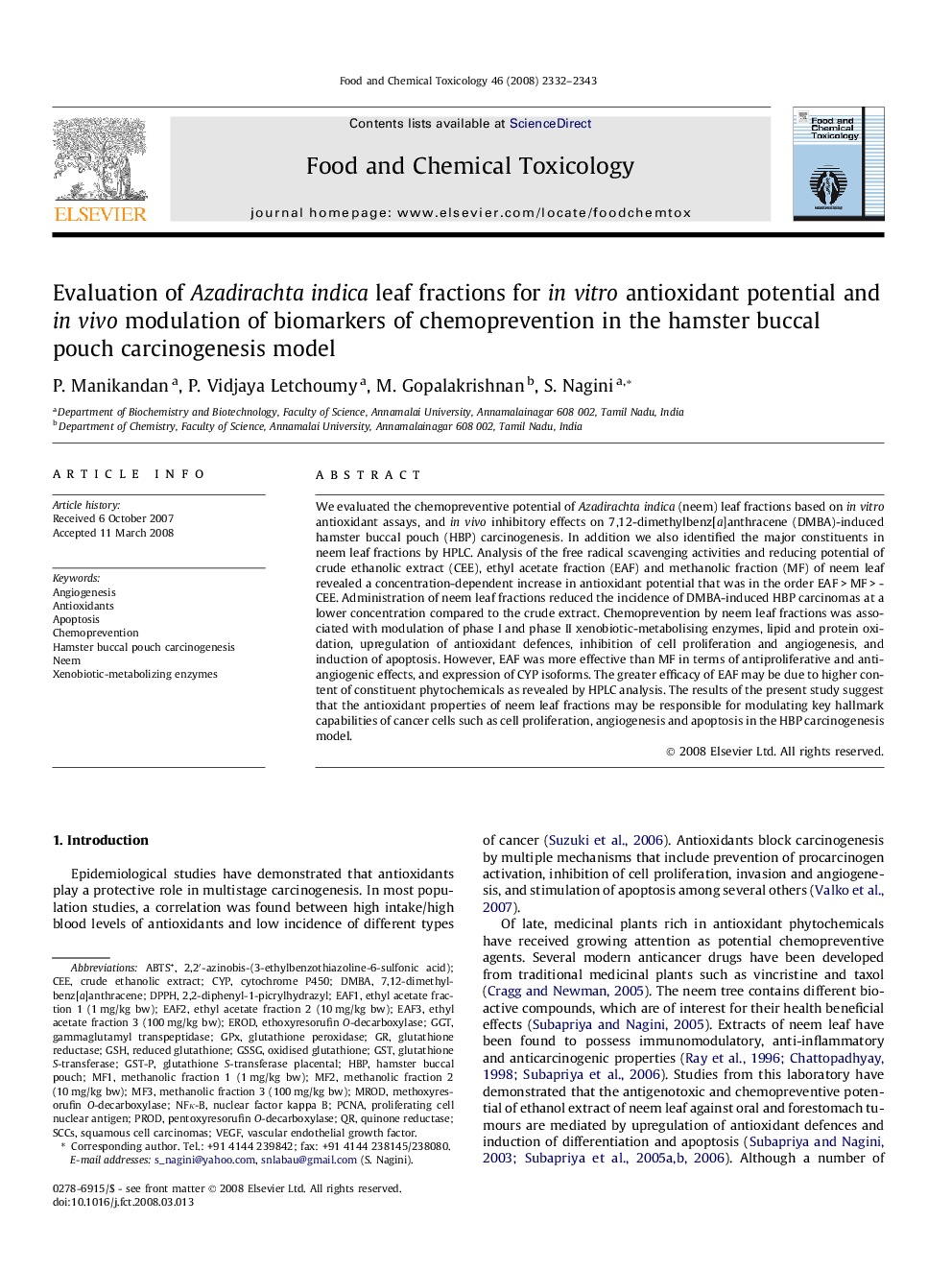| Article ID | Journal | Published Year | Pages | File Type |
|---|---|---|---|---|
| 2586564 | Food and Chemical Toxicology | 2008 | 12 Pages |
We evaluated the chemopreventive potential of Azadirachta indica (neem) leaf fractions based on in vitro antioxidant assays, and in vivo inhibitory effects on 7,12-dimethylbenz[a]anthracene (DMBA)-induced hamster buccal pouch (HBP) carcinogenesis. In addition we also identified the major constituents in neem leaf fractions by HPLC. Analysis of the free radical scavenging activities and reducing potential of crude ethanolic extract (CEE), ethyl acetate fraction (EAF) and methanolic fraction (MF) of neem leaf revealed a concentration-dependent increase in antioxidant potential that was in the order EAF > MF > CEE. Administration of neem leaf fractions reduced the incidence of DMBA-induced HBP carcinomas at a lower concentration compared to the crude extract. Chemoprevention by neem leaf fractions was associated with modulation of phase I and phase II xenobiotic-metabolising enzymes, lipid and protein oxidation, upregulation of antioxidant defences, inhibition of cell proliferation and angiogenesis, and induction of apoptosis. However, EAF was more effective than MF in terms of antiproliferative and antiangiogenic effects, and expression of CYP isoforms. The greater efficacy of EAF may be due to higher content of constituent phytochemicals as revealed by HPLC analysis. The results of the present study suggest that the antioxidant properties of neem leaf fractions may be responsible for modulating key hallmark capabilities of cancer cells such as cell proliferation, angiogenesis and apoptosis in the HBP carcinogenesis model.
